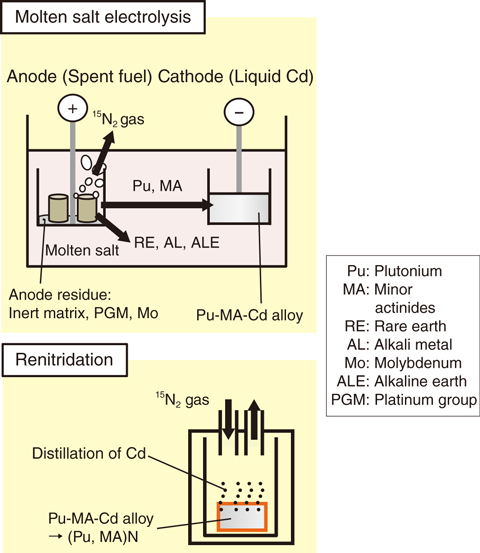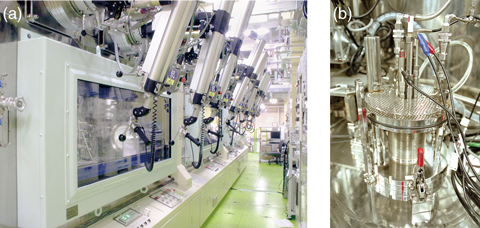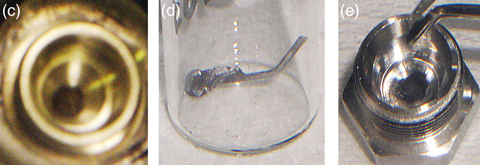
Fig.4-27 Outline of the pyrochemical treatment of MA nitride fuel

Fig.4-28 Experimental apparatus for the study of pyrochemical-treatment of MA nitride fuel

Fig.4-29 Am compounds and alloys obtained in our study
Partitioning and transmutation (P&T) technology serves to separate elements in high level radioactive wastes discharged from reprocessing plants depending on their intended use and chemical character, and to transmute long-lived nuclides to short-lived or stable ones. This technology aims at reducing the burden of high level waste and using repositories efficiently.
We have been conducting research and development of the technology for transmuting highly radioactive long-lived nuclides including minor actinides (MA: neptunium (Np), americium (Am), and curium (Cm)) using a dedicated accelerator-driven system (ADS). To transmute MA using ADS, neutrons produced by injection of an accelerated proton beam to a metal target will be supplied successively to a subcritical core to maintain fission chain reactions of MA and other elements in the core. The composition and chemical form of the fuel pellets containing MA elements in the core should be appropriate for MA transmutation. Uranium-free MA nitride has been selected as the first candidate for the MA transmutation fuel. Previous feasibility studies on the transmutation system show that approximately 20% of the MAs in the fuel can be transmuted in one burning cycle of approximately two years. To increase the transmutation ratio, reprocessing of spent MA transmutation fuels and reuse of the MA elements existing in spent MA transmutation fuels are necessary. Therefore, a method suitable for reprocessing MA transmutation fuel should be developed.
We have been researching and developing spent MA transmutation fuel reprocessing technology to recover and reuse the MA in spent fuels. One of our concerns is pyrochemical treatment technology (Fig.4-27), which is based on that developed to reprocess metal fuels for fast reactors. This technology, in which molten salts and liquid metals are used as solvents, is suitable for treatment of MA transmutation nitride fuels because solvents are resistant to radiation damage and decay heat. Advantages such as the feasibility of recycling the expensive and highly enriched 15N used in the nitride fuels have also been pointed out. Conversely, one disadvantage is the necessity of an inert gas atmosphere because the salts used as solvents are hygroscopic.
Our experimental results with plutonium (Pu) and MA (Np and Am) samples at the lab-scale (Figs.4-28 and 4-29) indicate that the elemental technologies are feasible. The similarity of the behaviors of MA and Pu, which suggest that the technology has advantages in terms of proliferation resistance in principle, have been certified. At present, our focus is on evaluating the detailed behavior of the elements that are thought to exist in spent MA transmutation fuels, including fission product elements and inert matrix elements such as zirconium (Zr) and titanium (Ti). We also focus on the development of an engineering-scale apparatus for nitride fuel treatment.